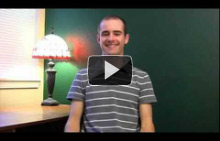Biography of Enrico Fermi
Bith Date: September 29, 1901
Death Date: 1954
Place of Birth: Rome, Italy
Nationality: Italian, American
Gender: Male
Occupations: physicist, scientist
The Italian-American physicist Enrico Fermi (1901-1954) discovered "Fermi statistics," described beta decay, established the properties of slow neutrons, and constructed the first atomic pile.
In Enrico Fermi, the theorist and experimentalist were combined in a supremely intimate, complementary, and creative way. He possessed an almost uncanny physical intuition which, together with his personal simplicity, made him universally admired and respected.
Fermi was born on Sept. 29, 1901, in Rome, the third child of an official in the Ministry of Railroads. At about the age of 10 his interest in mathematics and physics awakened. A perceptive colleague of his father's, the engineer A. Amidei, recognized Fermi's truly exceptional intellectual qualities and guided his mathematical and physical studies between ages 13 and 17.
By the time Fermi received his doctorate from the University of Pisa in 1922, he had written several papers on relativistic electrodynamics, using the methods of Albert Einstein's general theory. Fermi received a fellowship to study at the University of Göttingen. In spite of the fact that he attacked problems of interest to the Göttingen physicists, his 8 months there were not very satisfactory. In 1924, on George E. Uhlenbeck's urging, Fermi went to study at the University of Leiden with Uhlenbeck's teacher, Paul Ehrenfest. Several years later, when Uhlenbeck was at the University of Michigan, he arranged for Fermi to spend the summers of 1930, 1933, and 1935 at Michigan's Summer School for Theoretical Physics.
Fermi Statistics
Late in 1924, after leaving Leiden, Fermi went to the University of Florence, where he taught mathematical physics and theoretical mechanics. In 1926 he published his first major discovery, namely, the quantum statistics now universally known as Fermi-Dirac statistics. The particles obeying these statistics are now known as fermions.
Fermi's discovery did not stem basically from the concurrently emerging quantum theory, as might be expected, but rather from his own studies in statistical mechanics. These studies began as early as 1923 but were frustrated because a key concept, Wolfgang Pauli's exclusion principle, was still missing. Fermi saw immediately that all particles (fermions) obeying Pauli's exclusion principle would behave in a definite way, quantum-mechanically and statistically speaking. Fermi's discovery led to an understanding of certain important features of gas theory, of how electrons in metals conduct electricity, of why electrons do not contribute to the specific heats of substances, and of many other phenomena. It also undergirded Fermi's widely used 1927 statistical model of the atom, an approximate model in which the atom is envisioned as a statistical assemblage of electrons.
Theory of Beta Decay
The years between 1926 and 1938 constituted Fermi's "golden age." He accepted the chair of theoretical physics at the University of Rome in 1926 and only 3 years later became one of the first 30 members (and sole physicist) to be elected to the Royal Academy of Italy. In 1928 he married Laura Capon; they had a son and a daughter.
Fermi made significant contributions to a wide variety of problems in atomic, molecular, and nuclear spectroscopy; in particle scattering theory; in atomic and nuclear structure; and in quantum electrodynamics. His most celebrated theoretical work of this period was his 1933 theory of nuclear beta decay, a theory that nicely supplemented the theory of nuclear alpha decay of George Gamow, R. W. Gurney, and Edward U. Condon.
In beta decay a negatively charged particle (beta particle), known to be identical to an electron, is emitted from the nucleus of an atom, thereby increasing the atomic number of the nucleus by one unit. Fermi worked out in a short time an elegant theory of beta decay based on the idea that a neutron in the nucleus is transformed (decays) into three particles: a proton, an electron (beta particle), and a neutrino. Actually, the neutrino--an elusive, massless, chargeless particle--was not detected experimentally until the 1950s.
Slow Neutrons
In the late 1920s Fermi decided to attack experimental problems in nuclear physics rather than continue his ongoing spectroscopic researches. By mixing beryllium powder with some radon gas, he had a source of neutrons with which to experiment and determine whether neutrons could induce radioactivity. He constructed a crude Geiger-counter detector and, methodically, he started bombarding hydrogen, then went on to elements of higher atomic number. All results were negative until he bombarded fluorium and detected a weak radioactivity. This key date in neutron physics was March 21, 1934.
With high excitement Fermi and his coworkers continued. By summer 1934 they had bombarded many substances, discovering, for example, that neutrons can liberate protons as well as alpha particles. In addition, they had detected a slight radioactivity when bombarding uranium, and they attempted, without success, to understand why aluminum, when bombarded with neutrons, could not decide, in effect, which of two different nuclear reactions to undergo.
Their next discovery was a milestone. They found that the level of radioactivity induced in a substance was increased if a paraffin filter was placed in the beam of neutrons irradiating the substance. Fermi's hypothesis for this miracle, which he immediately confirmed, was that in passing through the paraffin, a compound containing a large amount of hydrogen, the neutrons had their velocity much reduced by collisions with the hydrogen nuclei; and these very slow neutrons--contrary to all expectations--induced a much higher radioactivity in substances than did fast neutrons. Furthermore, the old aluminum mystery had been solved: slow neutrons produce one kind of reaction, fast neutrons another. The discovery of the remarkable properties of slow neutrons was the key discovery in neutron physics.
By 1937 Fermi's wife and their children became directly affected by the racial laws in Fascist Italy. In December 1938 the Fermi family went to Stockholm for the presentation of the Nobel Prize in physics to Fermi. He and his family then left for the United States, arriving in New York on Jan. 2, 1939, where Fermi accepted a position at Columbia University.
Atomic Age
With the assistance of Herbert L. Anderson, Fermi produced a beam of neutrons with the Columbia cyclotron, thus verifying the fission of uranium. Then he quantitatively explored the conditions governing its production. He and his coworkers also proved, using a minute sample, that the fissionable isotope of uranium is U235. By mid-1939 there was clear evidence that a self-sustaining chain reaction might be realizable. Furthermore, the stupendous military importance of nuclear fission had become clear. By July 1941 Arthur H. Compton, chairman of a special committee of the National Academy of Sciences, could report the possibility not only of a uranium bomb but also of a plutonium bomb.
Fermi was asked to assume the huge responsibility of directing the construction of the first atomic pile. He, and other key physicists, moved to the University of Chicago in the spring of 1942; by early October their researches had progressed to the point where Fermi was confident he knew how to construct the pile, and the project (the "Manhattan Project") was under way. Construction of the pile began in mid-November 1942, and on December 2 Fermi directed the operation of the first self-sustaining chain reaction created by man. The actual length of time it was operated on that historic day was 40 minutes; its maximum power was 1/2 watt, enough to activate a penlight. It was the opening of a new age, the Atomic Age.
Fermi's experiment was far more than an experiment in pure research. Huge national laboratories were constructed, one of which, Los Alamos, had immediate responsibility for the construction of the nuclear bomb. Its director was J. Robert Oppenheimer. In September 1944 he brought Fermi from Chicago primarily to have him on hand during the last, critical stages in the construction of the bomb. By early 1945 the project had proceeded to the point where the greatest amount of new information could be obtained only by actually exploding the fearsome weapon. The test, which bore the code name "Project Trinity," was successfully carried out on July 16, 1945, in the desert near Alamogordo in southern New Mexico.
Last Years
On Dec. 31, 1945, Fermi became Charles H. Swift distinguished service professor of physics and a member of the newly established Institute (now the Enrico Fermi Institute) for Nuclear Studies at the University of Chicago. This was the beginning of a period during which his reading and range of interests--always confined largely to physics--contracted considerably. For a few years he continued working in the fields of nuclear and neutron physics. In 1949 he demonstrated theoretically that the extremely high cosmic-ray energies can be accounted for by the accelerations imparted to them by vast interstellar magnetic fields. At about the same time his interest shifted away from nuclear physics to high-energy (particle) physics. In a number of his researches he used the Chicago synchrocyclotron to explore pi-meson interactions in an effort to discover the means by which the nucleus is held together in a stable configuration.
Fermi died in Chicago on Nov. 29, 1954.
Further Reading
- The best existing guides to Fermi's scientific work are Emilio Segrè's Enrico Fermi, Physicist and his "Biographical Introduction" and various physicists' "Notes" in The Collected Papers of Enrico Fermi, edited by Segrè and others (2 vols., 1962-1965). Personal aspects of Fermi's life are recounted in the delightful work by his wife, Laura Fermi, Atoms in the Family: My Life with Enrico Fermi (1954) and Illustrious Immigrants: The Intellectual Migration from Europe, 1930-41 (1968). See also Niels H. de V. Heathcote, Nobel Prize Winners in Physics, 1901-1950 (1954); the obituary notices of Fermi by E. Bretscher and John D. Cockcroft in the Royal Society of London, Biographical Memoirs of Fellows of the Royal Society, vol. 1 (1955), and by Samuel K. Allison in the National Academy of Sciences of the United States, Biographical Memoirs, vol. 30 (1957); Pierre de Latil, Enrico Fermi: The Man and His Theories (trans. 1965); and Nobel Foundation, Nobel Lectures, Including Presentation Speeches and Laureates' Biographies, 1922-1941 (1965).




